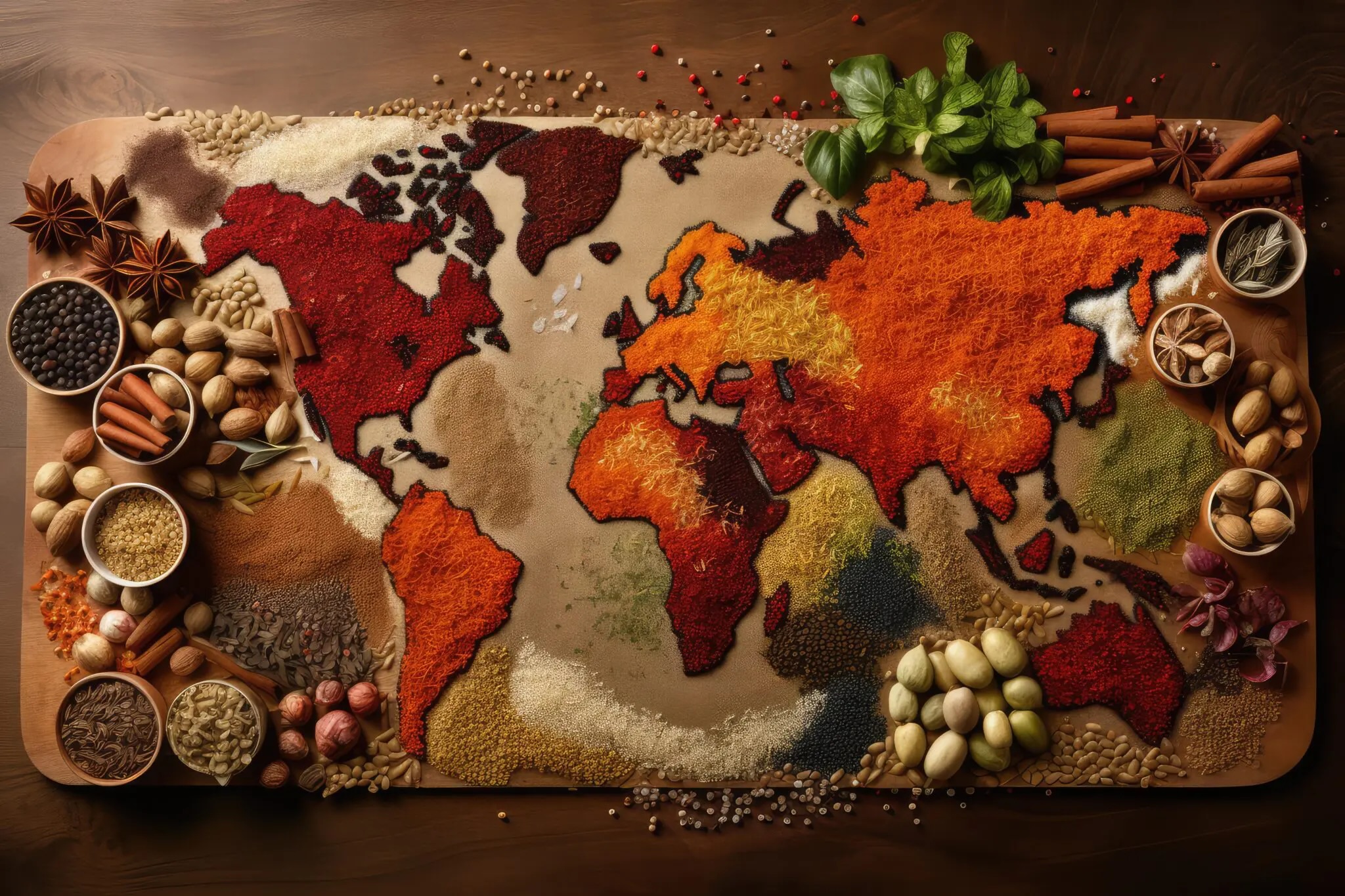Eat THIS Masala Daily for Shocking Health Benefits (Backed by Ayurveda!)

From the vibrant hues dusting market stalls to the complex aromas wafting from kitchens worldwide, masala – the artful blend of spices – is often seen merely as a way to add flavour to food. But delve deeper, and you uncover a rich tapestry woven through millennia of history, culture, traditional medicine, and even survival itself, particularly rooted in the Indian subcontinent. This exploration reveals that the true essence of masala extends far beyond taste, encompassing ancient preservation techniques, profound health benefits recognized by Vedic wisdom, and a global journey marked by trade, tradition, and troubling modern concerns.
Ancient Guardians: Spices as Preservatives and Protectors
Long before the advent of refrigerators, humanity faced a constant battle against food spoilage, especially in warmer climates. The secret weapon? Spices. Research confirms that spices possess potent natural antimicrobial compounds capable of inhibiting the growth of bacteria and fungi that cause food to decay. Historical practices, like wrapping meat in aromatic leaves, evolved into the deliberate use of spices like cloves, cinnamon, turmeric, and pepper to extend the shelf life of perishable foods.
This crucial role explains the well-documented correlation between climate and spice use. Studies, including a landmark Cornell University analysis of thousands of recipes, show that cuisines from hotter regions traditionally incorporate significantly more spices. This "Darwinian gastronomy" wasn't just about flavour preference; it was likely a vital adaptation for food safety, ensuring communities consuming spice-laden foods were better protected against foodborne pathogens. The immense value placed on these preservative and flavouring agents fueled ancient global trade routes, making spices like black pepper worth their weight in gold and driving voyages of discovery.
Vedic Wisdom and Ayurvedic Healing: The Sacred Spice Cabinet
In the Indian subcontinent, the connection between spices and well-being runs deeper still, embedded within Vedic traditions and the holistic science of Ayurveda. Vedic texts, dating back thousands of years, reference spices not just in cooking but also in sacred rituals for purification and offerings. Turmeric ("Haldi"), the "golden spice," remains a powerful symbol of purity and auspiciousness, indispensable in ceremonies from daily prayers to weddings.
Ayurveda, the ancient Indian system of medicine, views spices as powerful tools for maintaining health and balance. It meticulously classifies them based on their intrinsic properties:
- Rasa (Taste): The six tastes (sweet, sour, salty, pungent, bitter, astringent) influence the body differently.
- Virya (Energy): Whether a spice has a heating or cooling effect.
- Vipaka (Post-digestive Effect): The long-term impact after digestion.
Based on these properties, spices are used to balance the three fundamental bodily energies or doshas (Vata, Pitta, Kapha). Warming spices like ginger, black pepper, and cloves stimulate digestion (Agni or digestive fire) and are often used to balance Vata and Kapha. Cooling spices like coriander and fennel help pacify Pitta. Ayurvedic texts detail the specific medicinal actions of common spices – turmeric for its anti-inflammatory and detoxifying properties, ginger for stimulating digestion and relieving nausea, cumin for metabolism, and black pepper for enhancing nutrient absorption – benefits increasingly validated by modern scientific research.
India: Cradle of Spices, Hub of Global Trade
The Indian subcontinent's unique combination of diverse climates and rich biodiversity made it the natural cradle for a vast array of the world's most sought-after spices – black pepper, cardamom, cinnamon, turmeric, cumin, and cloves are just a few examples indigenous to the region. Archaeological evidence confirms spice usage dating back to the Indus Valley Civilization. This natural abundance, coupled with deep-rooted knowledge of their uses, established India as the undisputed global hub for spice production and trade, a position it largely holds even today, accounting for a major share of the world's spice exports.
The True Purpose: Beyond Flavor to Function
While modern culinary use often focuses solely on taste and aroma, the traditional understanding of masala was holistic. Its purpose was intrinsically linked to health and preservation. Spices were intentionally combined not just for complex flavour profiles but also to enhance digestion, counteract potential imbalances in food, preserve nutrients, and offer specific therapeutic benefits.
Many spices are potent sources of bioactive compounds with scientifically recognized medicinal effects: antioxidants, anti-inflammatories, digestive aids (carminatives), and antimicrobial agents. From turmeric's curcumin fighting inflammation to ginger's gingerols soothing nausea, and black pepper's piperine boosting nutrient uptake, the spice box was, in essence, a traditional medicine cabinet integrated into daily meals. Even spiritual well-being was considered, with Ayurveda classifying spices based on their subtle effects on the mind (Sattvic for clarity, Rajasic for stimulation).
A Modern Menace: The Threat of Fake Masala
Tragically, the profound health benefits of spices are being undermined by a pervasive modern problem: adulteration. "Fake masala" refers to spice powders mixed with cheap, non-food, and often toxic substances to increase bulk or mimic vibrant colours. Documented examples are alarming:
- Turmeric adulterated with lead chromate (a source of toxic lead) or Metanil yellow (a non-permitted synthetic dye).
- Chili powder mixed with brick dust, sawdust, or carcinogenic Sudan dyes.
- Coriander powder contaminated with dung powder.
- Black pepper bulked up with papaya seeds.
Consuming such adulterated spices poses severe health risks, including lead poisoning (causing neurological damage, especially in children), cancer, kidney and liver damage, and acute digestive illnesses. Recent reports of contaminated spice shipments being rejected internationally underscore the scale of this issue. It is crucial to understand: the health problems arise from these dangerous adulterants, not from pure, unadulterated spices.
Debunking Myths: Masala is Healthy (When Pure!)
The prevalence of adulteration, coupled with the association of some Indian dishes with high oil or salt content, has fueled the misconception that masala itself is unhealthy. This is largely untrue. Pure spices are virtually calorie-free and packed with health-promoting compounds. While excessive amounts of very hot spices might irritate sensitive individuals, many common masala ingredients (like cumin, coriander, fennel, ginger, cloves) actively aid digestion and can even prevent acidity. Authentic, traditional masala does not contain MSG or harmful chemical additives; these are sometimes found in processed snack seasonings, leading to confusion. When sourced carefully and used appropriately, masala is a powerful contributor to a healthy diet.
Reviving Tradition: The Power of Homemade Masala
In the face of adulteration concerns, there's growing interest in returning to the tradition of homemade masala. Grinding whole spices at home offers unparalleled benefits:
- Maximum Freshness and Flavor: Volatile oils are preserved, leading to richer aromas and tastes.
- Guaranteed Purity: Complete control over ingredients ensures no fillers, artificial colors, or contaminants.
- Customization: Blends can be tailored to personal taste preferences and health needs.
While challenges exist – sourcing high-quality whole spices, the time commitment, and learning the right techniques – the benefits for both flavor and health are significant. With online resources and a growing interest in authentic food practices, making masala at home is a feasible and rewarding way to reconnect with the true essence of spices.
Global Spice Boom: A World Awakens to Masala
The allure of masala is no longer confined to the subcontinent. Driven by the global spread of Indian cuisine, increased travel, diaspora communities, and a growing awareness of the health benefits of spices (especially 'superfoods' like turmeric), the demand for Indian spices and blends is surging worldwide. Market analyses predict continued strong growth globally, with Indian masalas becoming staples in kitchens and restaurants far beyond their origin.
Conclusion: Honoring the Spice Legacy
Masala is a testament to ancient wisdom, where food and medicine were intrinsically linked. From preserving food in harsh climates and forming the bedrock of Ayurvedic healing to driving global trade and enriching cuisines worldwide, spices hold a remarkable legacy. While navigating modern challenges like adulteration requires vigilance and a push for quality, understanding the true, holistic purpose of masala allows us to appreciate its profound benefits. By embracing purity, perhaps even exploring the rewarding path of homemade blends, we can honor this heritage and harness the power of spices for both vibrant flavour and vibrant health.
Spices



![From Kathmandu to the World: How Excel Students Are Winning Big [Admission Open]](https://www.nepalaaja.com/img/70194/medium/excel-college-info-eng-nep-2342.jpg)
